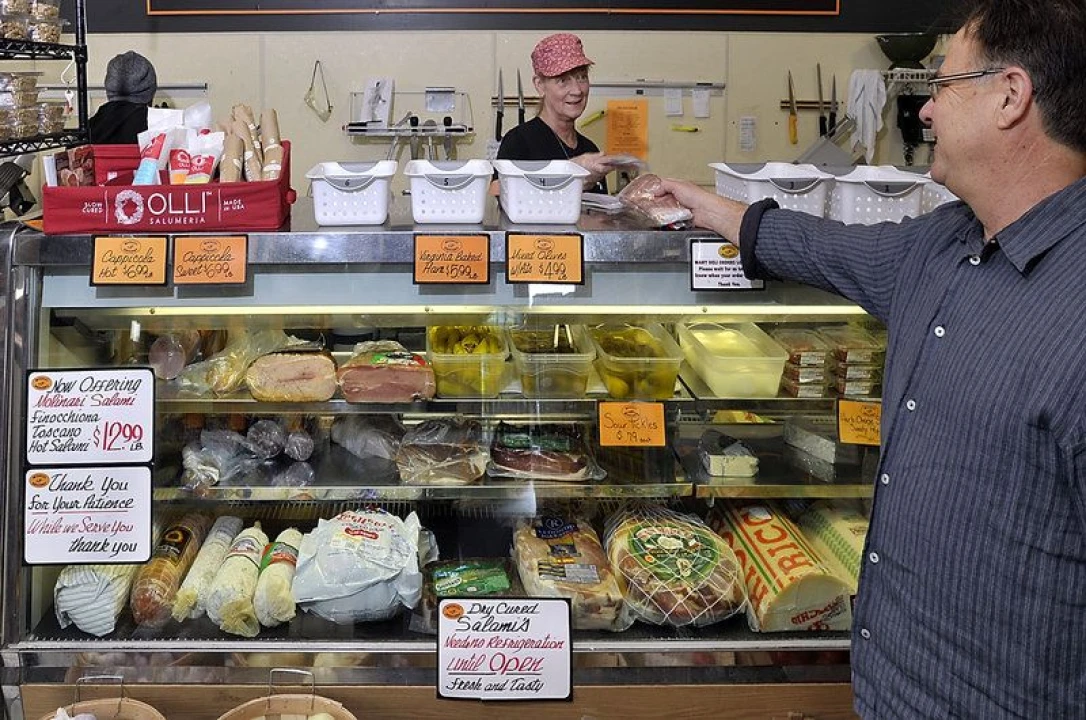Salami, coppa, culatello, pancetta.
Local businesses that traffic in Italian cured pork products are excited about the possibility of importing more of these delizioso meats from regions of northern Italy that have been off-limits to American palates for decades.
The U.S. Department of Agriculture recently announced it would relax a ban on the importation of Italian cold cuts and other pork products beginning May 28, a move that will allow products from four regions and two provinces in northern Italy to be imported to the United States.
"It's almost like it's coming full circle," said Bruce Micucci, president of Micucci Wholesale Foods in Portland, which services more than 200 restaurants in Maine, New Hampshire and northern Massachusetts.
"You know, dry-cured meats -- whether it be capicolas and sopressata salamis, all dry-cured prosciuttos -- were very popular 30 years ago," Micucci said. "It's not so much new meats as accepting the old ways of doing things.... We've lost so much flavor and taste."
The USDA edict covers the Lombardy, Emilia-Romagna, Veneto and Piedmont regions, and the provinces of Trento and Bolzano. Meats from these areas had been banned from this country because of the threat of swine vesicular disease, a communicable disease in swine.
Arlin Smith, general manager of Hugo's Restaurant and Eventide Oyster Co. in Portland, said once products from these regions of Italy become available, "I guarantee you we would be buying as much of that stuff as possible. It's beautiful stuff. They are the masters. They are the ones who have been doing it for years."
Carrie Davenport, general manager of The Rogers Collection, a Portland-based importer of Mediterranean foods, predicted that a lot more authentic Italian charcuterie will become available in U.S. markets, and that over time, more regions of Italy could be opened as well.
Portland consumers who today buy Italian-style meats at Micucci's, the Italian grocery on India Street, may well be buying products made in Canada. Davenport said Italian producers have set up factories in Canada and export meats from there to the United States, "but it's not the authentic product from Italy."
"It's done with the same recipes," she said, "but it's basically an imitation product, so to speak."
Meat-processing plants in Italy must meet USDA standards, and initially there will probably only be a small number of plants within the regions that will be able to meet those standards, Davenport said. But as time goes on, more plants will be approved, and more products should become available.
Culatello, a refined cut of prosciutto that is cured and soaked in wine, will be one new import that will be coveted by chefs, Davenport said. Lardo, or cured fatback, will be "huge," he added.
"There are lots of salamis and sausages and different cuts that you never see in America," said Smith. "Some of them are (made with) spontaneous fermentation. Basically, the same exact sausage in five different areas of Italy, every single one of them is going to taste different."
Lee Skawinski, chef/owner of Vignola Cinque Terre in Portland, has visited Italy many times to search for new products that he can bring back for his restaurant's menu.
He said both terroir and tradition make Italian salumi so full of flavor and prized by chefs and food lovers. "Terroir" refers to the natural environment in which the product was made. Where was the animal raised, and how? What did it eat?
"There's nothing like boar salumi from Tuscany, you know?" he said. "You just can't replicate that. Those flavors and those aromas just don't happen anyplace else in the world. It's because of the breeds of pigs and what they're eating."
There's so much regional variety in husbandry and production techniques in Italy, Skawinski said, that a slow food book that records all the different kinds of salumi is 400 pages long.
"People who are making salumi over there, a lot of them are families that have been doing this for 50, 60, 70, 100 years," he said. "I know that the guys we buy prosciutto from have about a 30 percent turnback rate on the legs of pork that they buy.
"So they accept only seven out of 10, at best. There's a very, very strict quality level with a lot of the good producers that they live or die by."
The opening of the markets couldn't come at a better time. Americans' tastes are changing, and they are becoming more adventurous eaters willing to try a greater variety of foods.
Micucci notes that eight to 10 years ago, few stores carried -- and few cooks used -- pancetta in Maine. Now it's everywhere.
Micucci's brother Rick, who owns the Micucci Grocery, has noticed a preference among his customers for the authentic Italian prosciutto that is already sold there over domestic varieties.
"It's different, and it's just a terrific product," he said. "We sell more of that than the domestic, even though it is about twice the price. We don't even sell the domestic mortadella anymore. We only sell mortadella from Italy because it was that much different.
"We do produce some pretty good salamis in this country," Rick Micucci added, "but I would love to see some from Italy."
Davenport said consumers are demanding better, more authentic products partly because of their exposure to them in their travels, through the media and popular culture.
She points to the huge popularity of Eataly, a bustling collection of Italian markets and restaurants in New York City, with a second U.S. location opening in Chicago this year.
"I feel like the world is becoming a smaller place," Davenport said. "People have traveled or watched cooking channels where people are traveling, and they're more curious and more willing to try products from other cultures."
Meredith Goad can be contacted at 791-6332 or at:
Twitter: MeredithGoad



